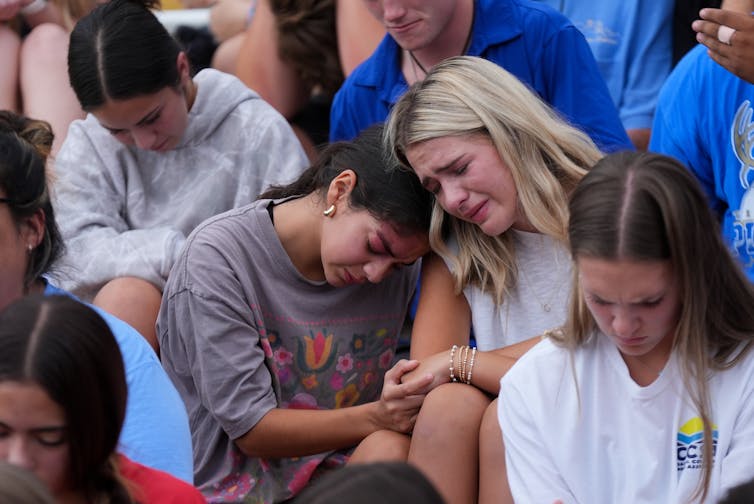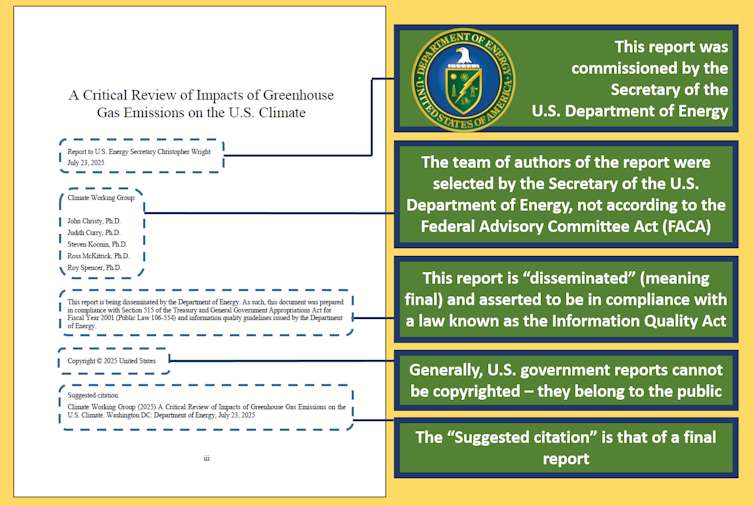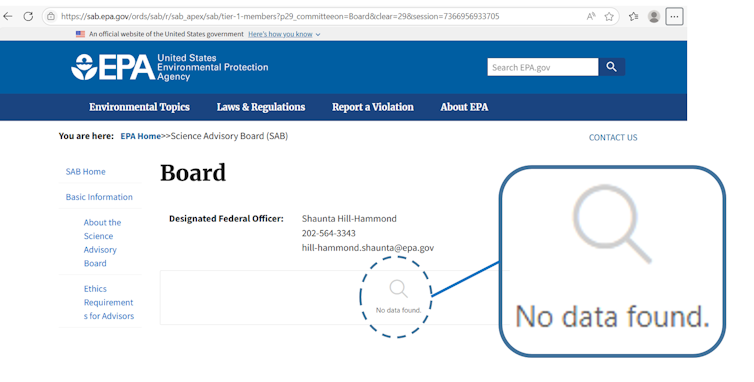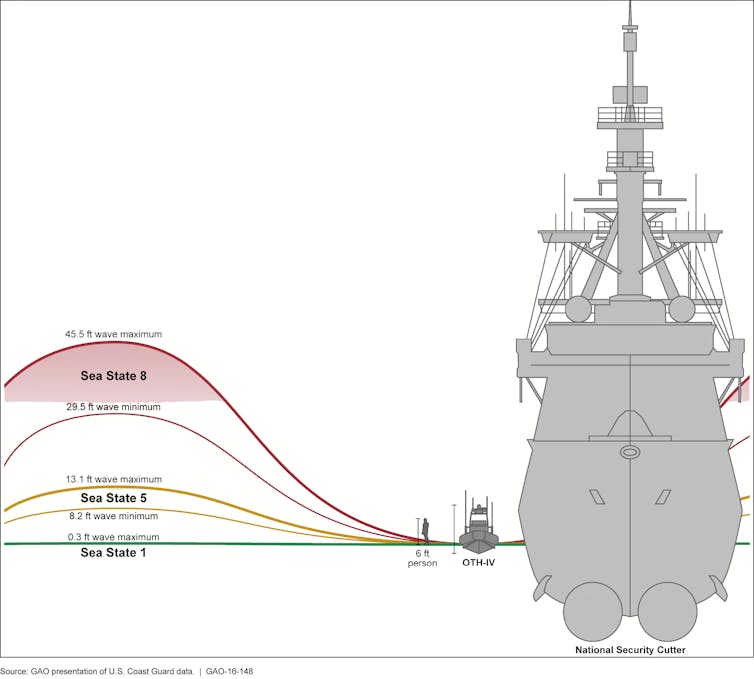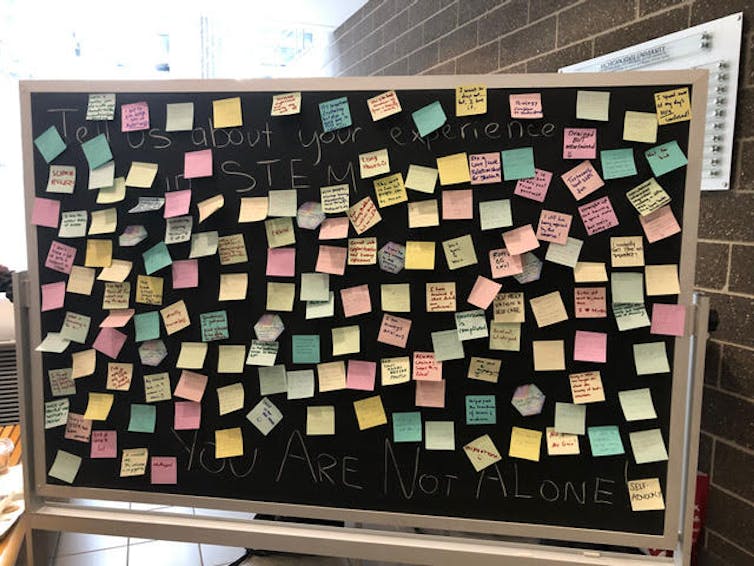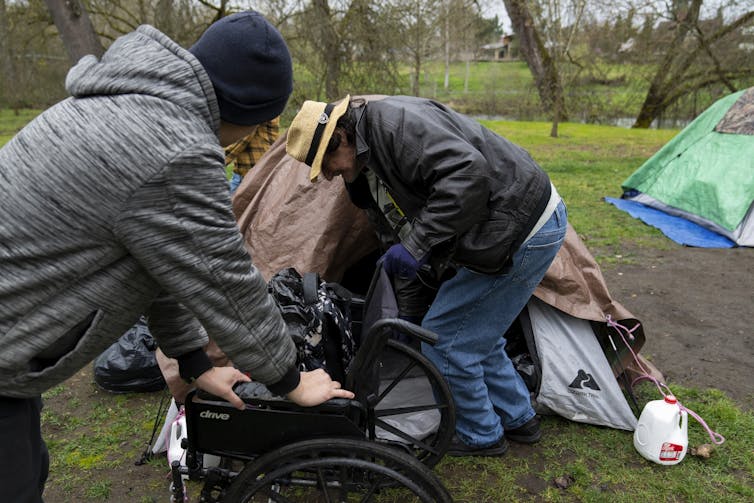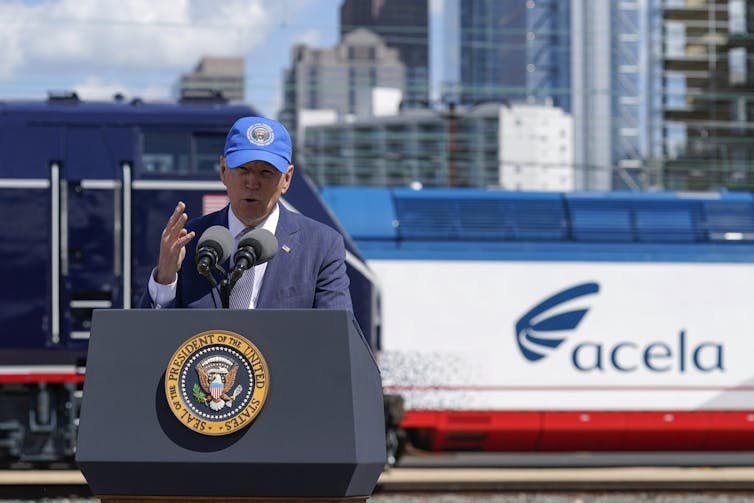Source: The Conversation – USA (2) – By Jeffrey Sklansky, Professor of History, University of Illinois Chicago

Most of the world observes International Workers’ Day on May 1 or the first Monday in May each year, but not the United States and Canada. Instead, Americans and Canadians have celebrated Labor Day as a national holiday on the first Monday in September since 1894, 12 years after the first observance of Labor Day in New York City.
The celebrations aren’t the same.
In much of Europe, Asia, Africa and Latin America, the event commonly called May Day honors workers’ political and economic power, often with demonstrations by socialist or workers’ parties and tributes to national labor rights. America’s Labor Day features labor union parades in many places, but for most Americans, it’s less about organized labor and more about barbecues, beach days and back-to-school sales.
Both holidays, however, arose during the same period, in the U.S. nearly 150 years ago, in the midst of an explosive labor uprising in America’s industrial heartland. Their founding united native-born and immigrant workers in an extraordinary alliance to demand an eight-hour workday at a time when American workers toiled an average of 10 or more hours daily, six days a week.
The call for shorter hours was rooted in a big idea: that workers’ days belonged to them, even if employers owned their workplaces and paid for their work. That idea inspired the loftiest goals of a growing labor movement that spanned from Chicago and New York to Stockholm and Saint Petersburg. And the labor activism of the late 1800s still casts a distant light on Labor Day today, carrying a vital message about the struggle for control of workers’ daily lives.
I’m a historian at the University of Illinois Chicago, where I study the history of labor. The fight for shorter hours is no longer a top issue for organized labor in the U.S.. But it was a crusade for the eight-hour day that brought together the diverse coalition of labor groups that created Labor Day and May Day in the 1880s.

Bastiaan Slabbers/NurPhoto via Getty Images
Labor Day’s radical roots
Led by socialist-leaning trade unions, Labor Day’s founders included skilled, native-born craft workers defending control over their trades, immigrant laborers seeking relief from daylong drudgery, and revolutionary anarchists who saw the quest for control of the workers’ day as a step toward seizing factories and smashing the state.
They originally chose Sept. 5, 1882, for the first Labor Day to coincide with a general assembly in New York City of what was then the largest and broadest association of American workers, the Knights of Labor. Two years later, labor leaders moved the annual event to the first Monday in September, giving the majority of workers a two-day weekend for the first time.
As Labor Day parades and picnics spread, many American cities and states soon made it an official holiday. But since few employers gave workers the day off in its early years, Labor Day likewise became “a virtual one-day general strike in many cities,” according to historians Michael Kazin and Steven Ross.
American roots of May Day
My students come from working-class, mostly immigrant families, and Chicago’s history of labor conflict is all around our downtown campus in the heart of what were once meatpacking plants, stockyards and crowded immigrant neighborhoods.
My office is about 12 blocks from the spot – surrounded today by upscale office buildings – where the eight-hour movement reached a bloody climax in the battle of Haymarket Square. May Day commemorates that battle.
On May 1, 1886, unions of skilled workers organized by their crafts or trades led a nationwide general strike for the eight-hour day. They were joined by radical socialists, militant anarchists and many members of the Knights of Labor. More than 100,000 workers took part across the country.
The most dramatic demonstrations happened in Chicago, which had become the second-largest city in the U.S. after years of swift growth. Nearly 40,000 striking Chicago workers shut down much of that burgeoning industrial, agricultural and commercial hub. Three days later, a bomb thrown at a rally in Haymarket Square killed seven police officers, sparking a sweeping nationwide crackdown on labor activism.
In 1889, socialist trade unions and workers’ parties, meeting in Paris for the first congress of a new Socialist International, proclaimed May 1 an international workers’ holiday. They were partly following the lead of the new American Federation of Labor, which had called for renewed strikes on the anniversary of the 1886 action.
And they were honoring the memory of the eight labor activists who had been tried and convicted for the Haymarket bombing solely on the basis of their speeches and radical politics, in what was widely viewed as a rigged trial. Four “Haymarket martyrs” had been hanged and a fifth died by suicide before he could be executed.

Denis Thaust/SOPA Images/LightRocket via Getty Images
An earlier labor win
Though May 1 had long been associated with European celebrations of springtime, its modern meaning has deeper American roots that precede the Haymarket tragedy. It was on that date in 1867 that workers in Chicago celebrated an earlier victory.
At the end of the Civil War, campaigns for an eight-hour workday arose in cities across the country, championing a common interpretation of the abolition of slavery: for many workers, emancipation meant that employers purchased only their labor, not their lives.
Employers might monopolize workers’ means of making a living, but not their hours and days.
The movement led to laws declaring an eight-hour day in six states, including Illinois, where the new rule went into effect on May 1, 1867. But employers widely disobeyed or circumvented the laws, and states failed to enforce them while they lasted, so workers continued to struggle for a shorter workday.
Seizing the day
In the 19th century, American workers’ labor came to be measured by how long they worked and how much they were paid. While they were divided by their widely different wages, they were united by the generally uniform hours at each workplace.
The demand for a shorter workday without a pay cut was designed to appeal to all wage earners no matter who they were, where they were from, or what they did for a living.
Labor leaders said shorter hours meant employers would have to hire more people, creating jobs and boosting hourly pay. Spending less time on the job would enable workers to become bigger consumers, spurring economic growth.
Having “eight hours for work, eight hours for rest, and eight hours for what we will,” a popular labor movement refrain, would also leave more time for education, organization and political action.
Most broadly, the fight for shorter hours encapsulated workers’ struggle to control their own time, both on and off the job. That far-reaching struggle included efforts to limit the number of years people spent earning a living by ending child labor and creating pensions for retired workers – a topic I’m currently researching.
Benjamin Franklin famously said, “Time is money,” meaning that time off costs money that workers could be making on the job. But the message of the movement for a shorter workday was that the worth of workers’ lives could not be calculated in dollars and cents.
Diverging holidays
In the Haymarket battle’s aftermath, the alliance of radicals and reformers, factory operatives and skilled artisans, U.S.-born workers and immigrant laborers began to come apart. And as union leaders in the American Federation of Labor parted ways with socialists and anarchists, each side of the divided workers’ movement claimed one of the two labor days as its own, making the holidays appear increasingly opposed and losing sight of their shared foundation in the campaign for a shorter workday.
Conservative politicians and employers hostile to unions began to equate labor organizing with bomb throwing. In response, trade unions seeking acceptance as part of American industry and democracy displayed their allegiance on Labor Day by waving the American flag, singing patriotic songs and portraying themselves as proud, native-born Americans as opposed to foreign workers with subversive ideas.
Many political radicals and the immigrant workers among whom they found much of their following, meanwhile, came to identify more with the international workers’ movement associated with May Day than with American business and politics. They disavowed May Day’s origins among American trade unions, even as many trade unions distanced themselves from the radical roots of Labor Day. By the turn of the century, May Day moved further from the center of American culture, while Labor Day became more mainstream and less militant.

Mario Tama/Getty Images
20th-century gains and losses
In the 20th century, labor unions won shorter hours for many of their members across the country. But they detached that demand from the broader agenda of workers’ autonomy and international solidarity.
They gained a landmark achievement with the federal enactment of the eight-hour day and 40-hour workweek for many industries during the 1930s. At that point, economist John Maynard Keynes projected that the rising productivity of labor would enable 21st-century wage earners to work just three hours a day.
Workers’ productivity did keep climbing as Keynes predicted, and their wages rose apace – until the 1970s. But their work hours did not decline, leaving the three-hour day a forgotten vision of what organized labor might achieve.
![]()
Jeffrey Sklansky is a member of UIC United Faculty, the labor union representing the bargaining units of Tenure/Tenure-Track and full-time Non-Tenure Track faculty at the University of Illinois Chicago.
– ref. Labor Day and May Day emerged from the movement for a shorter workday in industrial America – https://theconversation.com/labor-day-and-may-day-emerged-from-the-movement-for-a-shorter-workday-in-industrial-america-262379



